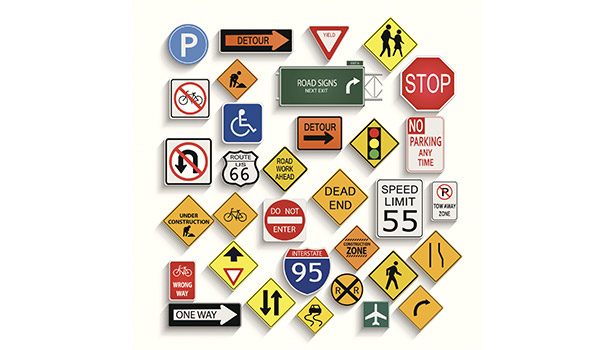Regulatory Review: Signs of Potential Prop 65 Revisions and their Impact for the Adhesives and Sealants Industry
An explanation of some of the core elements of a Prop 65 revision currently under consideration.



Signs, signs, everywhere there’s signs
Blocking up the scenery, breaking up my mind
Do this, don’t do that, can’t you read the sign?
—Five Man Electrical Band (1971)
If you are of a certain age, the lyrics to that song undoubtedly will spark memories. In case the photo in my bio didn’t already give it away, I’ll admit it: yes, I am part of the Woodstock Generation. I make this admission and raise the specter of this Five Man Electrical Band tune only because, whenever I travel to California, I find myself humming this little ditty at least once during my trip.
Any guesses to what triggers these musical reminiscences as I stroll the streets of L.A. Here’s a hint: “WARNING: This product contains chemicals known to the State of California to cause cancer and birth defects or other reproductive harm.”
Yes, it’s the ubiquitous Proposition 65 warning. You will greeted by it when you land at the airport and again when you pick up your rental car. It’ll be somewhere in your hotel lobby and at the gas station when you stop to fill the tank on your rental car. Grabbing a Dodger Dog at the ballgame? You’ll see it there, too.
But the point of this column is not to raise the issue of California’s penchant for placarding. No, this is more a cautionary tale of what can sometimes happen when an honest attempt to rectify a problem morphs into something else—and then eventually results in what can only be characterized as a nasty unforeseen consequence.
The Road to Good Intentions…
Almost two years ago, a small effort got under way in the California Assembly to curb some of the worst abuses of the Prop 65 rules. Small businesses failing to post the proper Prop 65 signage were liable to private citizen lawsuits, which generated a cottage industry for California barristers looking to play “gotcha” with unsuspecting small businesses. To address this legitimate concern, the assembly passed a bill last fall that would shield certain types of small business from litigation if they complied with Prop 65 signage requirements within 14 days after a violation notification. No harm, no foul, no pay day.
The success of this legislation gave Governor Jerry Brown an idea; he decided that his administration would look into the abuses of Prop 65 and come up with its own reform ideas. After several months of silence, Sacramento’s Office of Environmental Health Hazard Assessment (OEHHA) released a pre-regulatory proposal this past March that gives some idea of what direction the Brown Administration is taking reform. Here are some of the core elements for a Prop 65 revision that they suggested for consideration.
• Pictograms—adding the Globally Harmonized System (GHS) mandated pictograms representing “Health Hazard” to all consumer product warnings
• Warning signal word—requiring that the word “WARNING” appear in capitals and bold print on all labels, rather than the present requirement that the word (warning) be included on all labels
• Use of the word “expose”—rather than the label simply warning that the product contains a chemical known to cause [cancer or birth defects or reproductive harm], the revised label wording would require an indication that there would be exposure to such a risk
• Chemical name disclosure—formulation disclosure of the following 12 chemicals in the warning text: acrylamide; arsenic; benzene; cadmium; chlorinated tris; 1,4 dioxane; formaldehyde; lead; mercury; phthalates; tobacco smoke; and toluene
• Additional information provided at a new OEEHA website—development of a new link to an OEHHA website that would allow public access to additional information regarding a product warning that would include chemical identity (of any listed chemical), toxicological endpoint, route of exposure, and suggested action to avoid exposure
Since this pre-proposal was issued, OEEHA has gone dark again with regard to any further comments about the Prop 65 reform. In recent weeks, however, there had been some rumblings about a proposed rule being issued sometime before the end of October.
While I personally don’t maintain a crystal ball, it’s not difficult to envision myself and many of my colleagues visiting the Golden State next year to talk about what really belongs on a sign and label. Next year, this will be a priority issue for the ASC. It is imperative that we at the association make OEEHA officials understand that cluttering labels with more unnecessary information is not going to make the public one bit safer. And, just as importantly at an even more basic level, these officials—as well as growing body of other state regulators both in and outside of California—need to understand that there is a very fundamental difference between “hazard” and “exposure.” For all our members, large and small, suppliers or manufacturers, this may be the ASC’s most important message in 2015.
But until then, would you care to join me in song? “Signs, signs, everywhere there’s signs….”
Any views or opinions expressed in this column are those of the author and do not represent those of ASI, its staff, Editorial Advisory Board or BNP Media.
Looking for a reprint of this article?
From high-res PDFs to custom plaques, order your copy today!






